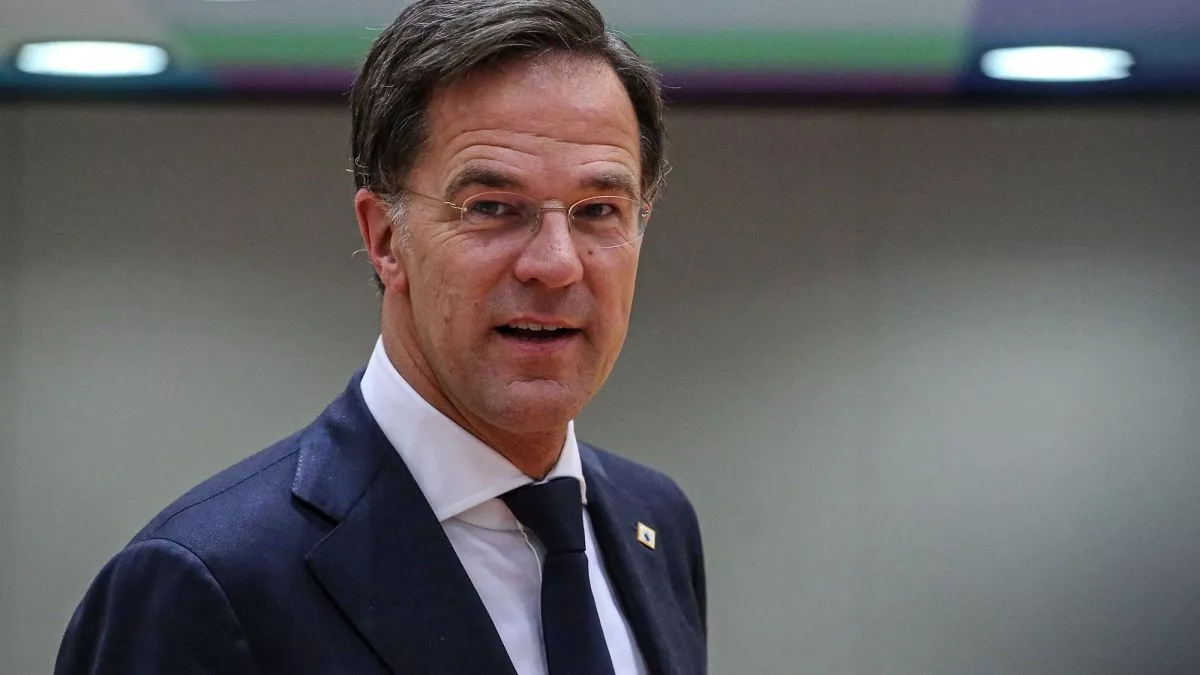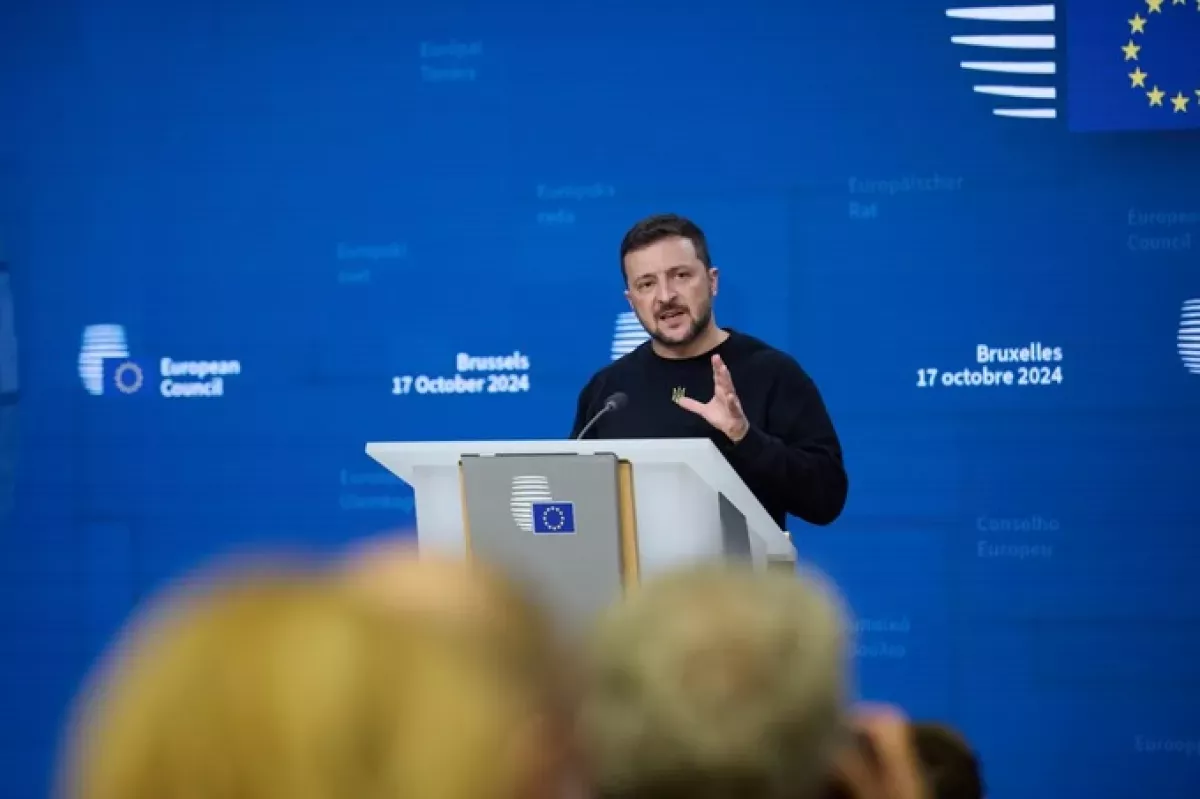NATO puts military deterrence at forefront Defence ministers in Brussels
On October 17 and 18, NATO defence ministers convened in Brussels. The formal agenda featured three main topics: ongoing support for Ukraine, strengthening partnerships in the Asia-Pacific region, and enhancing the Alliance's deterrence and defence capabilities. However, these discussions ultimately centre around the last point. While NATO is primarily focused on the military dimension of deterrence, effective deterrence in today's context requires a proactive diplomatic approach.
During the ministerial meeting in Brussels, it was hard to notice that any significant events were unfolding at NATO's new headquarters. Endless traffic jams and sudden road closures were a common sight throughout the Belgian capital. While high-level events are a regular occurrence and have long been a part of Brussels life, even local residents and officials working in international organizations sighed at the inconveniences that piled up. These disruptions were primarily linked to a series of high-profile meetings, including an EU summit, a Gulf Cooperation Council meeting, and a session of the European Council.
However, whispers in the corridors of Brussels institutions suggested that the logistical challenges were largely due to the presence of Saudi Arabia's Crown Prince Mohammed bin Salman. Many speculated that only his visit could justify such extraordinary security measures, even by Brussels standards.
Regardless of the reasons behind the heightened security in the city, the most significant event during those days was undoubtedly taking place at the NATO headquarters.
Deterrence, only deterrence
If one word could encapsulate the discussions and decisions from the recent NATO defence ministers' meeting, it would be "deterrence." This concept resonated in nearly every speech given by defence leaders and was highlighted during numerous press briefings and interviews with Alliance officials. As NATO's newly appointed Secretary General Mark Rutte remarked during his first time presiding over the meeting, “Strengthening our deterrence and defence is this Alliance’s top priority.”

The North Atlantic bloc is focused on military deterrence against Russia in Europe and China in the Asia-Pacific region (APR). Although the latter is not formally within the organization’s area of responsibility, since 2022 it has become standard practice for NATO to issue communiqués during annual summits that give increasing but still limited attention to China and the APR. This shift is also reflected in the new version of NATO's Strategic Concept, approved at the Madrid summit in 2022, where China was mentioned for the first time in a doctrinal NATO document.
The recent meeting of defence ministers further solidified this trend. It began with discussions in an expanded format, including defence ministers from Australia, Japan, New Zealand, and South Korea. This marked the first time NATO and partner countries from the APR met in such a format. It is not hard to guess what topic unites them. However, China still remains on the periphery of NATO’s attention. Currently, the focus is more on projecting future deterrence strategies that NATO is actively implementing against Moscow.
Deterrence is far from a new term in NATO's lexicon. In recent years, it has become the cornerstone of all strategic and conceptual documents of the Alliance, serving as a foundational idea for its operations. Furthermore, it aligns closely with NATO's original mission, which was established at the onset of the Cold War to counter the military power of the Soviet Union.
This term is also closely linked to the concept of collective defence, which underpins both the North Atlantic Alliance and other military-political blocs around the world. These alliances are specifically designed to deter real and potential military threats to their member states. By pooling the defence capabilities of the countries within the bloc and coordinating their development and training, NATO not only aims to mathematically enhance its defensive potential but also, quite simply, to make a strong impression.
The intended audience for these impressions consists of the countries that the Alliance perceives as threats. They must see that the military capabilities of the allies exceed, or at least match, their own. Based on this understanding, they should conclude that the consequences of any military actions against the allies would be so painful for them that it would be better not to engage in such actions at all. In other words, the potential repercussions of retaliatory actions must be deemed unacceptable.
NATO: Slow to mobilize, quick to act
Through the conceptual lens of deterrence, ministers addressed both operational and more strategic issues. The former primarily included the situation on the Russian-Ukrainian fronts and the increasingly complex questions surrounding NATO's support for Kyiv. Rutte reaffirmed the allies' commitment to providing Kyiv with €40 billion this year in security assistance. Of that amount, €20.9 billion has already been allocated in the first half of the year. The President of Ukraine, who was also in Brussels, attended another NATO-Ukraine Council meeting during the ministerial discussions and addressed the participants.

Indeed, all these official events were largely overshadowed by Zelenskyy's speech at the European Council, where the heads of state and governments of EU countries convened. In that address, he discussed NATO extensively, particularly regarding two strategic options that Ukraine now faces. The first option is to join the North Atlantic Alliance as quickly as possible. The second is to develop its own nuclear weapons. We will set aside this topic for now, as it warrants a separate discussion. Additionally, there are numerous other issues concerning NATO's cooperation with Kyiv that are vital not only for the prospects of ending the Russian-Ukrainian conflict but also for the post-war framework of European security.
Let’s return to the strategic aspect of the discussions and decisions on deterrence from the ministerial meeting in Brussels. Rutte emphasized the core of the NATO approach: allies must "move further and faster to meet the growing threats we face. This requires more forces, capabilities and investment to meet the ambitious targets set by our defence plans." The focus is on significantly enhancing the capabilities of the defence industry, ensuring greater security of supply chains, and advancing new technologies.
Building on this logic, the ministers approved five initiatives in " some of the most critical areas for Allied deterrence and defence."To emphasize that deterrence is meant to create a strong impression, these initiatives have been called "High Visibility Projects." They include the development of remotely operated aviation, standardization of artillery ammunition, widespread implementation of augmented reality technology in military exercises, and the exploration of new space technologies. Additionally, they decided to launch an initiative to enhance secure information sharing among member states. This is part of a broader digital transformation process within the Alliance, which also involves the accelerated adoption of dual-use technologies.
Central to NATO's deterrence concept remains the factor of nuclear weapons, just as it is for any actor that possesses them or is under the security umbrella of allies. The resurgence of the nuclear factor, which we have previously discussed, is so natural in today’s international conditions that NATO officials often mention it implicitly.

In summary, the NATO defence ministers' meeting resulted in a new set of decisions that details and strengthens the strategic emphasis on military deterrence against perceived threats by the Alliance. This focus not only determines NATO's actions regarding Russia and outlines its policy direction towards China and the Asia-Pacific region, but it also sets a long-term trajectory for the development of the military-industrial complex of member states and influences their entire socio-economic policies. Additionally, it provides an analytical framework through which elites in Western countries assess the world and their countries' positions within it.
However, the decisions made in Brussels last week were not particularly remarkable. All were expected and had a more technical than political nature. The roots of the political course towards a return to deterrence against Russia date back at least to 2014, when the NATO summit in Wales established a 2% GDP benchmark as a guideline for member states' military spending. Behind this seemingly simple target lay significant political and even greater military-industrial implications. For a time after the Wales summit, the Alliance moved slowly. However, as the recent meeting of defence ministers demonstrated, NATO is now beginning to mobilize much more rapidly and effectively.
Not just military might
The logic behind NATO's decisions and actions aimed at deterring opponents is clear and generally understandable. It can be criticized or supported, but it is easily calculable, as it reflects the Alliance's experience and the patterns of interstate interactions in the realm of security. This has been extensively and thoroughly documented in the theory of international relations.
However, the theory also clearly states that military capability is not the only component of deterrence. Moreover, it is not a sufficient component on its own, as relying solely on military and military-technical means can provoke a so-called "security dilemma." This dilemma, in turn, leads to an arms race and other "delights" of spiralling escalation. As a result, security diminishes in the long term, for everyone involved.
These conclusions are largely based on NATO's own historical experience. At the peak of the Cold War, the Alliance reached an important understanding: deterrence must necessarily have a counterpart—dialogue. In other words, military and diplomatic means need to be employed simultaneously and in a logically interconnected manner. Security and détente are not mutually exclusive concepts. This idea was famously articulated in 1967 by the then Belgian Foreign Minister Pierre Harmel, whose report would later become legendary. Today, NATO would do well to dust off its archival documents and return to the wisdom of its founding fathers.








